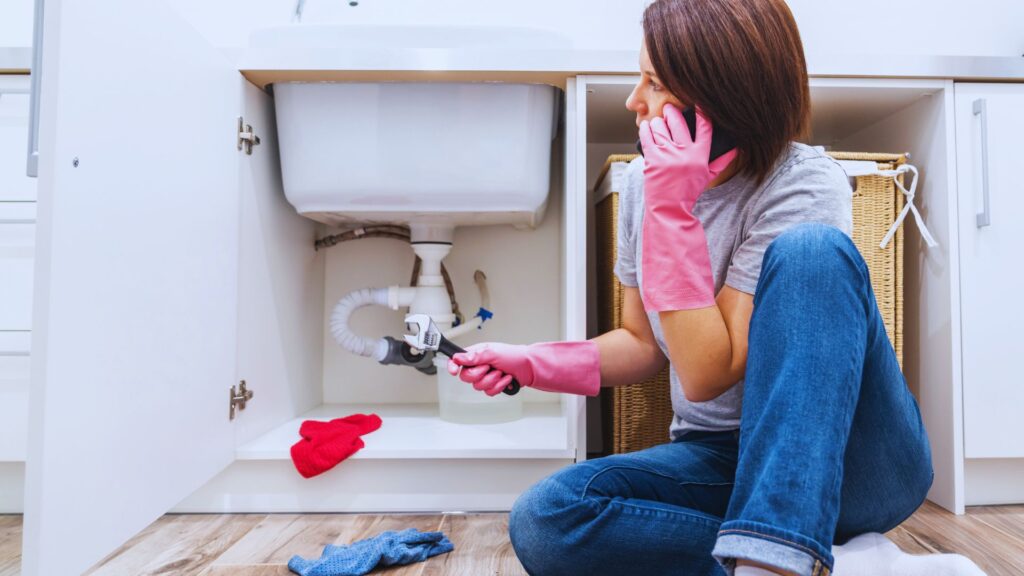Your showers are getting colder because several factors might be affecting your hot water. An undersized or poorly maintained water heater could be the culprit. Sediment buildup reduces heating efficiency, so regular flushing is essential. Check that your thermostat is set correctly, ideally around 120°F, and inspect it for malfunctions. Inadequate pipe insulation often leads to heat loss, especially in colder areas. Variations in your water supply, like pressure drops, can also impact temperature. Ensuring proper heater capacity and addressing these issues can restore your hot showers. Investigating further will provide additional actionable solutions.
Key Takeaways
- A malfunctioning thermostat can cause inconsistent water temperatures, leading to colder showers.
- Sediment buildup in the water heater reduces heating efficiency, resulting in cooler shower temperatures.
- An undersized water heater may not meet demand, causing hot water shortages during showers.
- Poor pipe insulation allows heat loss and cooling water before it reaches the shower.
- Changes in municipal water supply pressure can affect the water heater’s ability to maintain temperature.
Water Heater Issues
When your shower unexpectedly turns cold, it’s often due to water heater issues. If your water heater is undersized, it mightn’t supply enough hot water for consecutive showers, leaving the last person shivering. Upgrading to a larger capacity or a tankless water heater could prevent cold showers by guaranteeing a steady hot water supply.
Additionally, regular maintenance is essential. Over time, sediment can build up in the water heater, reducing its efficiency and causing temperature fluctuations. Flushing the tank every 6-12 months helps maintain peak performance and prevent water heater problems.
Another common culprit is a faulty heating element. These elements heat the water, but mineral buildup or corrosion can impair their function. Inspect the heating elements for damage and replace them if necessary to restore consistent hot water.
Power issues also affect electric water heaters. A tripped breaker can halt the heating process, so check your circuit breaker and reset it if needed.
Addressing these water heater problems promptly guarantees reliable hot showers and prevents unpleasant surprises. Remember, routine checks and timely water heater repair services are your best defense against unexpected cold showers. Staying proactive ensures your system runs efficiently, saving you from costly breakdowns and disruptions.
Thermostat Malfunctions
A reliable water heater is only part of the equation for maintaining hot showers; the thermostat’s role is equally important. When it malfunctions, it can lead to shower temperature issues by failing to regulate the water heater’s output effectively.
Typically, the thermostat controls the heating elements, maintaining a set temperature. If it becomes faulty, it might cause the water to be too cold or too hot or fluctuate unpredictably. This inconsistency can be frustrating and uncomfortable, especially during colder months.
To diagnose thermostat issues, you might need to access your water heater’s thermostat panel. Verify the power is off for safety, and then check the thermostat settings. If the temperature is set too low, adjust it to around 120°F.
However, if adjustments don’t solve the problem, you may need professional help. For those located in Aurora, contacting a water heater repair Aurora specialist can provide a more thorough inspection and repair if necessary.
Regular maintenance and timely repairs can prevent further complications and ensure your showers remain comfortable. Don’t let a malfunctioning thermostat disrupt your daily routine; address it promptly to maintain consistent water temperatures.
Sediment Build-Up
Despite its silent presence, sediment build-up in your water heater can greatly impact its efficiency and your shower experience. Over time, minerals like calcium and magnesium from hard water settle at the bottom of your tank.
These sediments create an insulating layer that forces the heating element to work harder, leading to inefficient heating and, ultimately, colder showers. A thick layer of sediment reduces the tank’s capacity to store hot water, meaning you’ll run out of hot water quickly.
To address this, regularly flushing your water heater becomes essential. Flushing involves draining a portion of water from the tank to remove accumulated minerals. It’s straightforward: turn off the power supply, attach a hose to the tank’s drain valve, and let the water flow out until it runs clear.
Doing this every 6-12 months can greatly enhance your water heater’s performance.
Additionally, be mindful of unusual noises from your heater, as these can indicate sediment build-up. By maintaining your water heater, you guarantee it operates smoothly, provides consistent hot showers, and extends the appliance’s lifespan.
Regular maintenance is a simple yet effective way to prevent cold shower surprises.
Pipe Insulation Problems
Proper pipe insulation is essential for maintaining consistent water temperatures in your shower. Without adequate insulation, heat loss occurs as hot water travels from your water heater to your shower. This is especially problematic during colder months when the temperature difference between the pipes and the surrounding air is considerable. Insulated pipes prevent heat from escaping, ensuring that the water remains hot until it reaches you.
To identify potential insulation issues, start by inspecting the pipes. Look for any exposed or inadequately insulated sections, especially in basements or crawlspaces. If you find areas lacking insulation, consider wrapping them with foam pipe insulation. This material is designed to minimize heat loss efficiently.
It’s also vital to check for any signs of wear or damage to existing insulation. Over time, insulation can degrade, leading to decreased effectiveness.
Another practical tip is to focus on areas where pipes are near exterior walls or unheated spaces, as these are more prone to heat loss.
Changes in Water Supply
When fluctuations in your water supply occur, they can markedly impact the temperature and availability of hot water in your home, leading to those dreaded cold showers.
Municipal supply issues, like pressure changes or temporary interruptions, can severely affect your water heater’s performance. If the water pressure drops, it mightn’t push enough water through the heater, causing insufficient heating. In extreme cases, a complete interruption can stop your water heater from functioning altogether.
Additionally, seasonal variations play a significant role. During colder months, incoming water from the municipal supply is naturally colder, requiring your heater to work harder to bring it up to the set temperature. If your heater’s capacity is limited or it’s not adequately maintained, it might struggle, resulting in cooler showers.
Lastly, infrastructure changes by your water supplier may alter the water pressure or flow rate. Upgrades or repairs can temporarily change supply dynamics, impacting your home’s hot water consistency.
It’s vital to stay informed about any municipal work in your area and plan accordingly. Regular communication with your local utility company can help you understand these changes and prepare for any potential disruptions in hot water availability.
Increased Water Usage
As households grow or schedules align, increased water usage often leads to colder showers because the demand exceeds the hot water supply.
Imagine everyone wanting a shower in the morning or running the dishwasher and washing machine simultaneously. Your water heater, whether tank or tankless, has a limit on how much hot water it can provide at any given time. When you exceed that, the result is a lukewarm or cold shower.
To manage this, consider staggering water use. Schedule showers at different times or run household appliances like dishwashers and laundry machines during off-peak hours. This way, you’re not overloading your water heater.
If your household size has increased or water usage patterns have changed considerably, you might need a larger water heater. Upgrading to a model with greater capacity or opting for a tankless system could prevent hot water shortages.
Additionally, check your hot water system’s settings. Confirm the thermostat is set correctly, typically around 120°F.
Regular maintenance includes flushing your water heater annually to remove sediment buildup, which can impede its efficiency. These steps can help maintain consistent hot water availability.
In Summary
To tackle your chilly shower woes, start by inspecting your water heater for thermostat malfunctions or sediment buildup, which can hinder its performance. Check if the pipes need better insulation to retain heat and ensure that increased household water usage or changes in the water supply aren’t causing temperature fluctuations.
At Pipe It Up, we specialize in water heater repair, helping homeowners restore reliable hot water by addressing these common issues. Whether it’s a minor fix or a system upgrade, taking proactive steps ensures your showers stay warm and enjoyable. Don’t let water heater troubles leave you in the cold—contact us for expert solutions!




